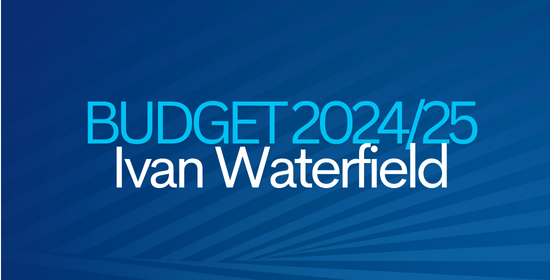The State Budget was handed down in June. The 2024-25 Budget forecasts significant challenges ahead, including a $3.6 billion deficit, rising unemployment and a subdued economic outlook. It also highlights the fiscal shock of an unfair GST carve-up, whereby $11.9 billion in GST grant revenue was reallocated away from NSW.
Treasurer Daniel Mookhey’s second budget offers modest assistance for SMEs, as the government focuses on housing and fiscal repair. Detailed below is a breakdown of the key areas:-
KEY MEASURES INCLUDE:
- A $1.5 billion tax increase on businesses and landlords via the NSW Government refusing to index land tax above the current $1.075 million tax-free threshold. This is despite inflation running at about 4%.
- Extension of the Energy Bill Relief Fund for the 2024-25 year, being $325 for eligible small businesses.
- Fee-free training for new apprentices and trainees will continue, at a cost of $16.3 million.
- $650 million for essential worker housing.
- $632 million to continue delivering new and safe housing across the Northern Rivers and Central West, also a link into the Hunter and Port Stephens.
FISCAL & ECONOMIC OUTLOOK
- NSW economic growth: Gross State Product (GSP) growth is estimated to be a modest 1.5% for 2023-24 but the forecast for 2024-25 has been upwardly revised to 2% (from 1.25% projected in the Half-Yearly Review) and growth is expected to remain at 2% in 2025-26 before further accelerating to 2.25% in 2026-27.
- Unemployment: The NSW unemployment rate is expected to end the financial year 2023-24 at 4% (upwardly revised from 3.75% projected in the Half-Yearly Review) and further increase to 4.5% at the end of 2024-25. In our region we are sitting slightly below this.
- Inflation: Sydney CPI growth is projected to slow from 7.1% in 2022-23 to 4.25% in 2023-24 and 3% in 2024-25. Wage growth is expected to exceed inflation in 2024-25, with wages projected to rise 3.75%. Similar view for the Hunter.
- Budget result & net debt: The budget deficit is forecast to shrink from a revised $9.7 billion for 2023-24 to $3.6 billion for 2024-25. Further improvement is expected over the forward estimates, with the budget deficit narrowing to $2.5 billion in 2025-26. However, without a budget surplus in the near term, net debt is forecast to increase from $96.8 billion (11.9% of GSP) in 2023-24 to $110.5 billion (12.8% of GSP) in 2024-25, reaching $139.5 billion (14.2% of GSP) in 2027-28.
For our region and our Members, we wanted to highlight some of the wins (not many) that have come about based on the advocacy from HunterNet in partnership with the other peak bodies. A number of the items below are not solely Hunter Focused but may provide opportunities for Hunter Based Businesses.
SKILLS & INNOVATION
- TAFE infrastructure: $190.2 million for repairs and upgrades to TAFE facilities and digital infrastructure across the state.
- Apprenticeships and traineeships: $8.9 million to continue fee-free training for apprentices and trainees.
COST-OF-LIVING RELIEF
A total of around $8.7 billion will be spent in 2024-25 to support households with cost-of-living pressures in housing, energy, health, education, recreation and transport.
- Energy rebates: additional $100 million for the energy social program to support energy bill relief for up to 1 million households. From 1 July 2024, the Family Energy Rebate and Seniors Energy Rebate will increase to $250, while the Low-Income Household Rebate and Medical Energy Rebate will increase to $350.
ENERGY & ENVIRONMENT
Energy transition: $3.1 billion to deliver infrastructure providing lower cost and more reliable energy.
- Protecting our environment: $307.2 million to improve water security for regional communities and industries, as well as improving environmental water quality, $43.0 million for the Environment Protection Authority to boost the transformation of the waste and recycling industry in NSW and $75.1 million to maintain and improve the national parks.
- Renewable energy: Port of Newcastle will receive $128.5 million for road upgrades and infrastructure to transport equipment components for Renewable Energy Zone projects.
- Mine rehabilitation: The Government will invest $15.2 million for mine rehabilitation and closure.
INFRASTRUCTURE & TRANSPORT
Building Parramatta Light Rail Stage 2: To build better connected communities in Sydney’s growing West, the State Government has provisioned $2.1 billion for the delivery of Parramatta Light Rail Stage 2.
- Sydney Metro: $13.4 billion will be allocated over four years for the continuation of the Sydney Metro West, including the potential addition of a station at Rosehill. There will also be $5.5 billion allocated for the ongoing delivery of Western Sydney Airport Metro, and $1.2 billion for the completion of the Sydney Metro City and Southwest.
- Better technology, better journeys: The Budget will provide a combined $65.0 million to improve technology in our train systems. It includes replacing the Digital Train Radio System and expediting technology for train crews during periods of degraded operations and to enhance their ability to recover.
SUPPORT FOR REGIONS
Road restoration work: $3.3 billion for restoration works to repair local and state roads damaged in major flood events, including in the Northern Rivers and Central West.
- Regional transport infrastructure: $1.4 billion to continue construction of M1 to Raymond Terrace extension and Hexham Straight Widening projects; $216.3 million to continue planning and early works on the Wyong Town Centre Upgrade (NSW and Australian government funded).
- Upgrading regional rail: $1.2 billion will be invested to continue delivering a new rail fleet to improve safety, accessibility, amenities and reliability of regional train journeys.
- Regional transport network upgrades: $350 million for Inland Rail Level Crossing at Parkes and Narrabri; $275 million for Nelson Bay Road to Bob’s Farm; $130 million for the Avoca Drive Upgrade; $105 million for Nowra Bypass and Network Planning; $47.3 million Jindabyne Education Campus to provide improved access to the new school facilities for local community; $10 million for Narooma Bridge Planning; and $10 million Dixons Long Point Crossing.
Stay Safe,
Ivan Waterfield
CEO HunterNet Co-Operative







